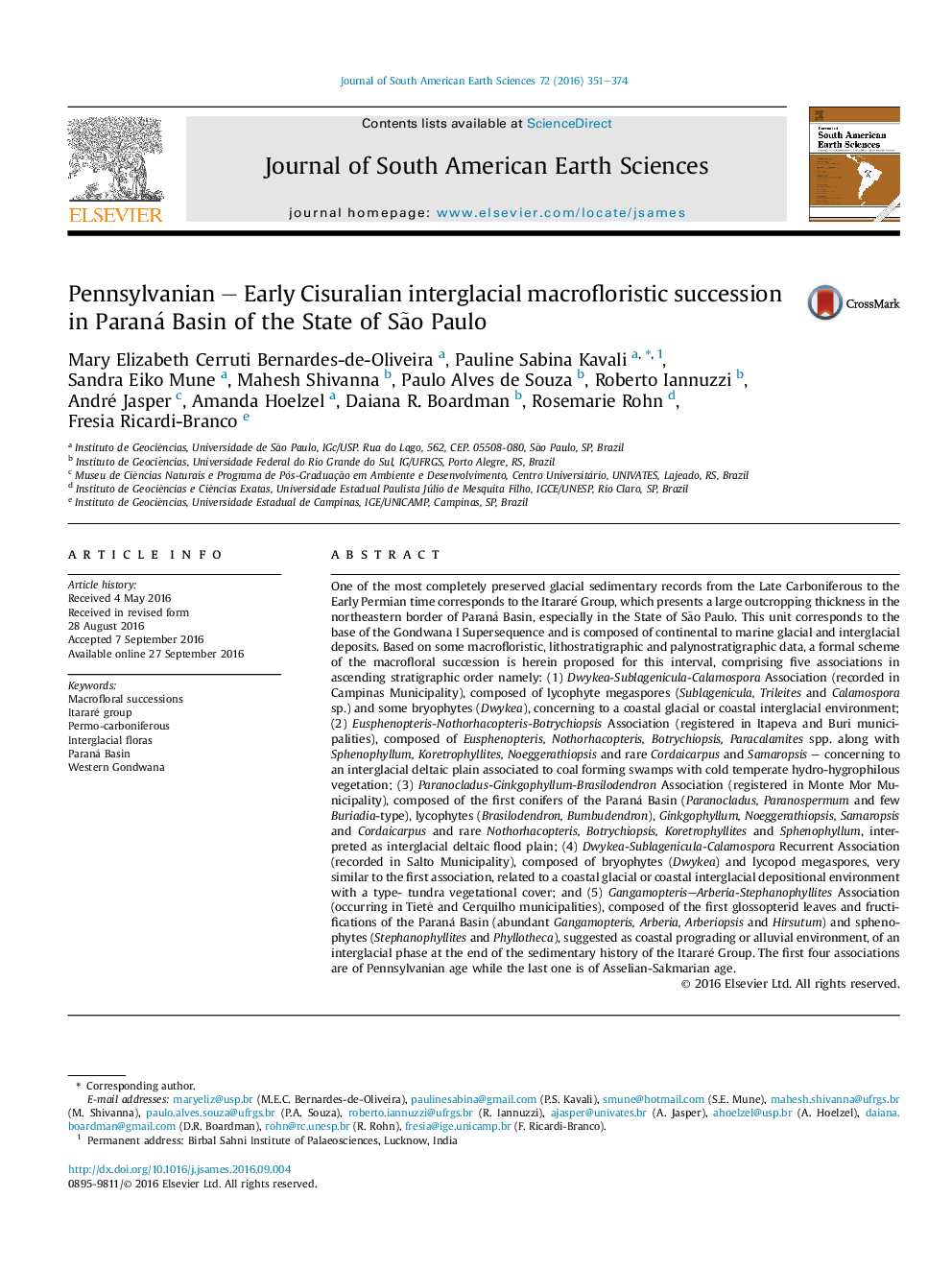| کد مقاله | کد نشریه | سال انتشار | مقاله انگلیسی | نسخه تمام متن |
|---|---|---|---|---|
| 4681971 | 1635138 | 2016 | 24 صفحه PDF | دانلود رایگان |

• Macrofloral succession scheme in São Paulo State of Paraná Basin is proposed.
• First four associations are of Pennsylvanian and last one is of Asselian-Sakmarian.
• Paleoenvironment for each association is reconstructed.
One of the most completely preserved glacial sedimentary records from the Late Carboniferous to the Early Permian time corresponds to the Itararé Group, which presents a large outcropping thickness in the northeastern border of Paraná Basin, especially in the State of São Paulo. This unit corresponds to the base of the Gondwana I Supersequence and is composed of continental to marine glacial and interglacial deposits. Based on some macrofloristic, lithostratigraphic and palynostratigraphic data, a formal scheme of the macrofloral succession is herein proposed for this interval, comprising five associations in ascending stratigraphic order namely: (1) Dwykea-Sublagenicula-Calamospora Association (recorded in Campinas Municipality), composed of lycophyte megaspores (Sublagenicula, Trileites and Calamospora sp.) and some bryophytes (Dwykea), concerning to a coastal glacial or coastal interglacial environment; (2) Eusphenopteris-Nothorhacopteris-Botrychiopsis Association (registered in Itapeva and Buri municipalities), composed of Eusphenopteris, Nothorhacopteris, Botrychiopsis, Paracalamites spp. along with Sphenophyllum, Koretrophyllites, Noeggerathiopsis and rare Cordaicarpus and Samaropsis – concerning to an interglacial deltaic plain associated to coal forming swamps with cold temperate hydro-hygrophilous vegetation; (3) Paranocladus-Ginkgophyllum-Brasilodendron Association (registered in Monte Mor Municipality), composed of the first conifers of the Paraná Basin (Paranocladus, Paranospermum and few Buriadia-type), lycophytes (Brasilodendron, Bumbudendron), Ginkgophyllum, Noeggerathiopsis, Samaropsis and Cordaicarpus and rare Nothorhacopteris, Botrychiopsis, Koretrophyllites and Sphenophyllum, interpreted as interglacial deltaic flood plain; (4) Dwykea-Sublagenicula-Calamospora Recurrent Association (recorded in Salto Municipality), composed of bryophytes (Dwykea) and lycopod megaspores, very similar to the first association, related to a coastal glacial or coastal interglacial depositional environment with a type- tundra vegetational cover; and (5) Gangamopteris–Arberia-Stephanophyllites Association (occurring in Tietê and Cerquilho municipalities), composed of the first glossopterid leaves and fructifications of the Paraná Basin (abundant Gangamopteris, Arberia, Arberiopsis and Hirsutum) and sphenophytes (Stephanophyllites and Phyllotheca), suggested as coastal prograding or alluvial environment, of an interglacial phase at the end of the sedimentary history of the Itararé Group. The first four associations are of Pennsylvanian age while the last one is of Asselian-Sakmarian age.
Figure optionsDownload as PowerPoint slide
Journal: Journal of South American Earth Sciences - Volume 72, December 2016, Pages 351–374